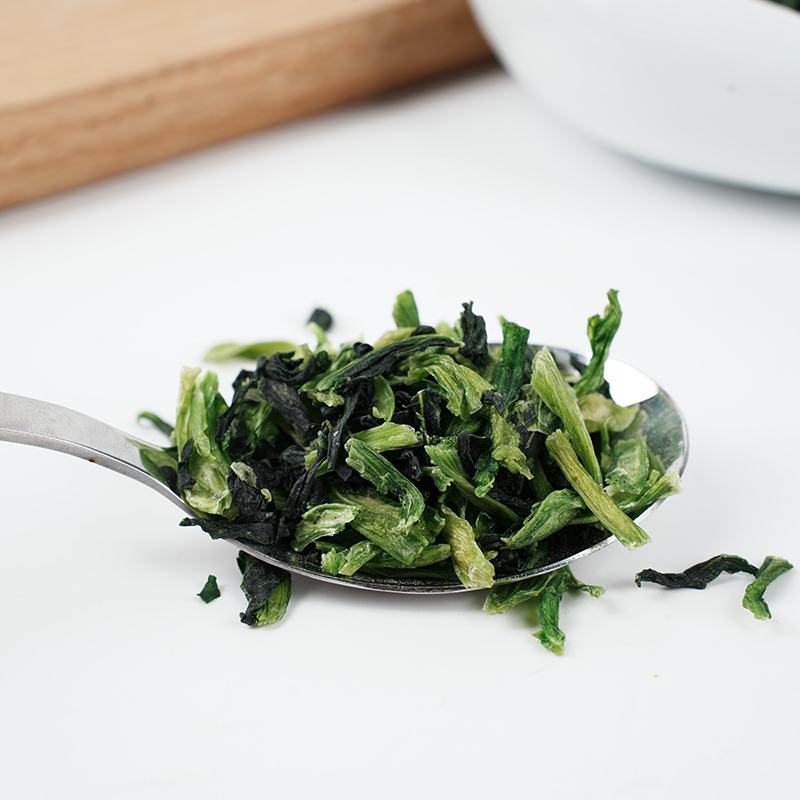To ensure shallots retain their aroma, flavor and overall quality, it is important to choose the right packaging materials and storage conditions. These factors help prevent moisture absorption, oxidation, and aroma loss, which are common issues in dried vegetable preservation.
Best Packaging Materials for Dried Spring Onions
Multi-layer Laminated Films:
The most commonly used packaging materials are PET/AL/PE (Polyethylene Terephthalate / Aluminum Foil / Polyethylene) and BOPP/VMPET/PE (Biaxially Oriented Polypropylene / Metallized Polyester / Polyethylene).
These materials offer excellent barrier properties against oxygen, moisture, and light, ensuring that the dried spring onions retain their freshness and aromatic compounds for a long time.
Aluminum foil layers are particularly effective at preventing UV exposure, which can degrade color and flavor.
Vacuum-Sealed Bags:
Removing oxygen from the packaging significantly slows down oxidation, preserving the original taste and preventing staleness.
Ideal for long-term storage or export where product freshness is a priority.
Aluminum Foil Bags:
These provide one of the highest levels of protection against moisture, light, and external contaminants.
Suitable for premium or specialty dried vegetable products that need extra freshness retention.
Glass Jars with Airtight Lids:
While not commonly used for bulk or export, glass jars are an excellent option for retail and premium products.
They provide an airtight seal but must be stored in a dark environment to avoid light exposure.
Food-Grade Plastic Containers with Oxygen Absorbers:
These are useful for bulk storage in food processing industries or warehouses.
Oxygen absorbers inside the packaging help extend shelf life by reducing oxidation.

Optimal Storage Conditions for Dried Spring Onions
Temperature Control:
Store dried spring onions at an optimal temperature range of 10-25°C (50-77°F).
High temperatures can cause the loss of volatile aromatic compounds, leading to a dull taste and reduced quality.
Humidity Management:
The ideal relative humidity for storage is below 50% to prevent clumping and microbial growth.
Using desiccants or silica gel packs inside the packaging helps absorb excess moisture and maintain product integrity.
Light Protection:
Exposure to light can lead to the breakdown of chlorophyll, causing discoloration and a loss of visual appeal.
Using opaque or aluminum foil-based packaging helps block UV rays and maintain the green color of the dried spring onions.
Oxygen Reduction:
Oxygen exposure can lead to oxidation, causing the dried spring onions to lose their flavor and freshness over time.
Nitrogen flushing or vacuum-sealing is often used in commercial packaging to extend shelf life.
Avoiding Strong Odors and Contaminants:
Dried spring onions are highly susceptible to odor absorption, meaning they should be stored away from strong-smelling substances like spices, chemicals, and cleaning agents.
This prevents contamination and ensures that the product retains its natural spring onion aroma.
By using the right high-barrier packaging materials and following strict storage guidelines, dried spring onions can retain their natural flavor, vibrant green color, and optimal texture for an extended period. If the goal is export packaging, it’s also important to consider vacuum sealing or nitrogen flushing for maximum shelf life.

 English
English 中文简体
中文简体





 Xinqian Village (Dehydrated Fruit and Vegetable Industrial Park), Duotian Street, Xinghua City, Taizhou City, Jiangsu Province, China
Xinqian Village (Dehydrated Fruit and Vegetable Industrial Park), Duotian Street, Xinghua City, Taizhou City, Jiangsu Province, China +86-13852647168
+86-13852647168
